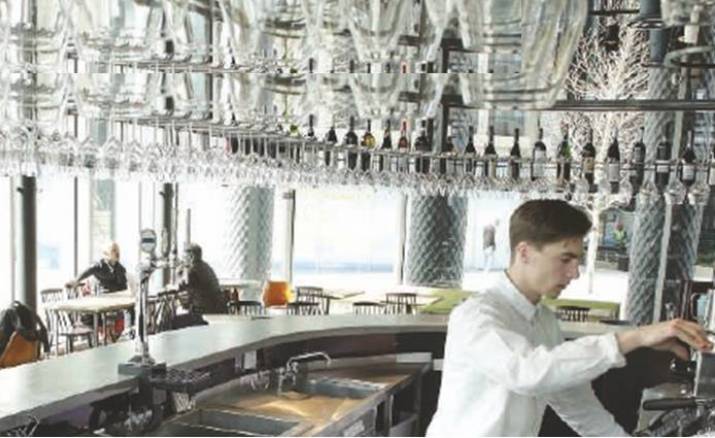Centre StageExtract from Casual Dining Magazine July 2017 |

|
| < Back |
Bartenders are creating works of art, so their performance space needs to be both practical and engaging to ensure a smooth delivery worthy of a standing ovation.From cocktails to coffee, there are a number of beverages that have made their way into restaurants that require specific equipment and setup, even for a standard quality. For staff to create these drinks, there's been an increasing focus on the workings of the back bar. From glasswashers and icemakers to blenders and cocktail shakers, there are a number of key products that back bars should contain, some more dependent on the type of operation than others with the increasing range of drinks now coming from the bar. It's pretty much a given that you want your refrigerator to keep items cold, your glasswasher to wash glassware and your icemaker to make ice. First and foremost, back bar equipment should do the job it claims to do. If you can assume that the equipment will deliver the end result, you can start to consider additional features that are designed to benefit the operation. "One of the most important things to consider, which is often overlooked when purchasing new equipment, is to plan ahead for peaks in demand," advises Bob Wood, director of DC Warewashing & Icemaking Systems. "That way, you will ensure that your machines have the capacity to cope with increased demand, have in-built quality and durability, are low maintenance, and have all the benefits and features which are most important to your particular business." The way in which energy can best be used and not wasted is of enormous importance. [When it comes to icemakers] "there are two basic methods of ice production: air-cooled and water-cooled," says Wood. "Air-cooled machines are usually much more water-efficient, using three to five times less water than water-cooled ones and have the added benefit of being able to be installed in areas where ventilation is poor. Water-cooled machines are usually more energy-efficient." Read full article in Casual Dining July 2017 issue ... |
Read Similar
Licence to Chill |
Let there be life! |
Kitted Out |
Clean Catering |




